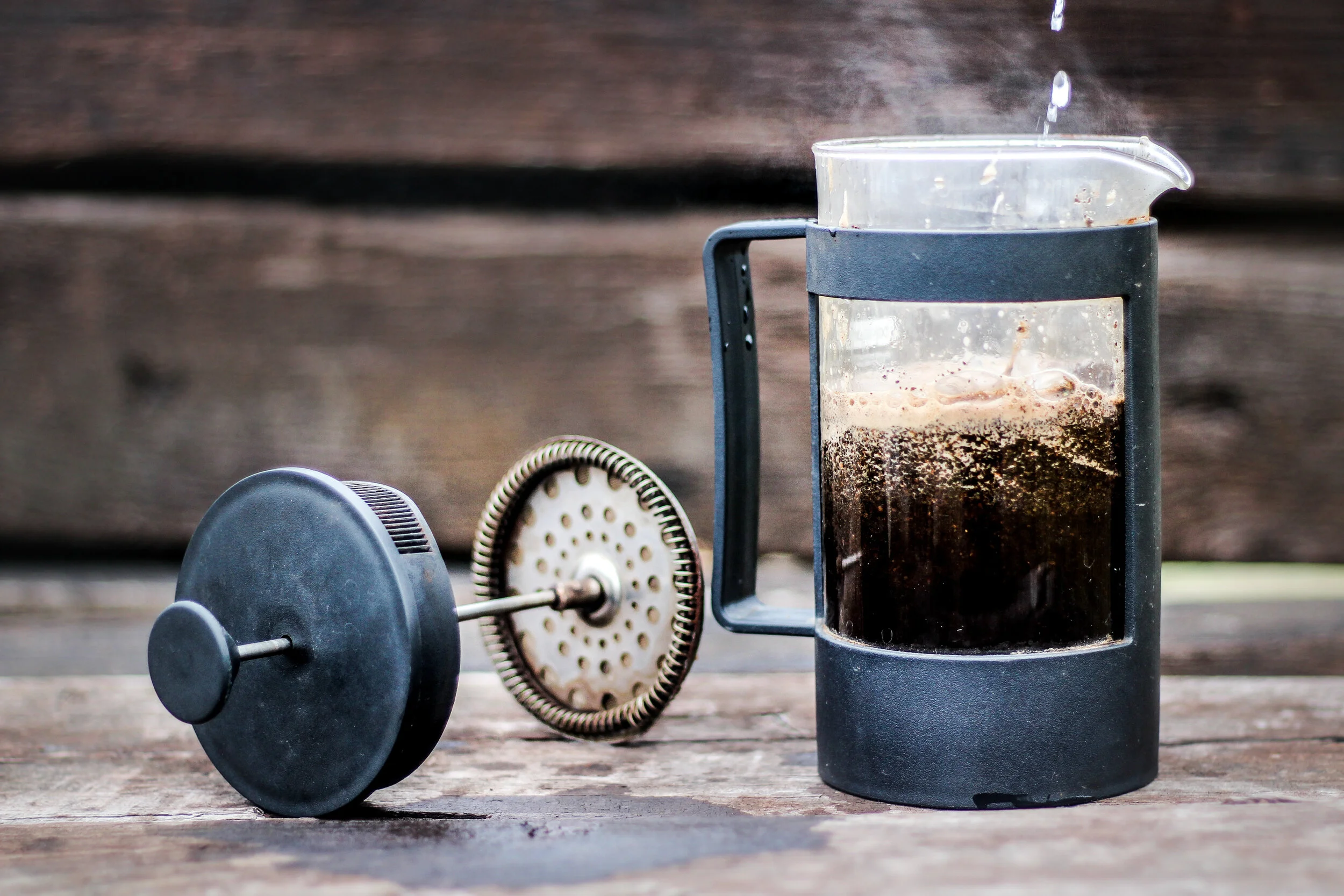Brewing Guide: Plunger
Cafetiere, French Press, Coffee Plunger.
Everyone’s got one somewhere in the house. Some people swear by them and others swear at them, but just like any other method a great brew can be created from this most humble of devices. All you have to do is follow some basic rules and the coffee will come to life.
As far as we are aware, there’s not a great deal of difference between plunger models available. Make sure the mesh filter is fine enough to hold the grinds down then simply choose one that suits the amount of coffee you usually make. Really, they’re a pretty straight forward affair. Much more important is the holy trinity of any great coffee brew – grind size, brew ratio and water temperature. Being able to control these three is your answer to a great coffee from any device.
Jonte & Grinder
Grind size:
We often get asked at the roastery “What coffee machine should I buy?” but the answer always starts with the grinder. Being able to grind fresh and with quality burrs makes the greatest difference to your coffee – above anything else. If you’re buying equipment, always buy the grinder first and get the best you can afford, then spend the rest on brewing gear. If that means a plunger then you will be still be comfortably equipped to make delicious coffee. We still see customers buying pre-ground coffee to put into home espresso machines costing thousands of dollars, unable to make a coffee taste “like in a cafe” – you know who you are. The coffee is stale and without the ability to adjust the grind size you’ll never get it just right.
That said, grinding for a plunger should be coarse like sand. Because you will be steeping it for a few minutes you don’t want it very fine or it will over extract and turn bitter. Grind what you need at the time as coffee oxidises very quickly once ground and can be stale within minutes. You can keep the rest of the beans in an airtight bag in the pantry, not the fridge. They’re very dry and any exposure to the moist air of a fridge will absorb not only water but the smell of anything else in there, like cheese or onions or fish.
Water temperature:
Boiling water is too hot for brewing coffee and will produce bitter flavours. We suggest letting the kettle rest for 3 minutes after boiling or pouring into another container first then the plunger, to bring the water down to an ideal 93 degrees or so.
When starting the pour too, its good to add a 100mL or so of the water to coffee first in the bottom of the plunger, give it a good stir, and wait for 20 seconds. This is called the “bloom” and allows the grinds to evenly take on water and swell up. Then add the rest of the water and you’re good to go. Let it steep for about 3 minutes before plunging.
Grace Serving the coffee
Brew ratio:
This is the key to it all. Plunger coffee is not espresso and you shouldn’t treat it as such, less is more. Made with the correct ratio of coffee to water, you can make a beautiful cup of joe, full of nuance and aroma, but to do it you need to back off on the coffee. For most of our roasts, we recommend 18g of coarse ground coffee to 300mL of water (or a 1:17 ratio) to find the sweet point. Honestly, in the roastery we use scales each time and if you feel like nerding it out with us, we suggest you do it too. Its the only way to achieve consistency every time and if you don’t believe what a difference this makes, try an experiment: one coffee made with 18g to 300mL of water and another with 22g to 300mL. The flavour will not only intensify, but will feel heavy and muddy and all the fresh aroma and floral notes will fade away. If you don’t have digital scales at hand to measure the coffee, our guesstimate is about 3 level dessert spoons makes 18 grams.
That’s about it. Once you’ve plunged it, get it straight into the cup as further exposure to the grinds at the bottom only leads to over-extraction and bitter tannins. Note: If you enjoy it black, allow the drink to cool, as the fresh flavours will open up in the glass as the coffee gets colder. Good luck out there, and if you’ve anything to add feel free to leave a comment.
Featured Brewing Blogs
-
October 2023
1
- Oct 31, 2023 Wild Bourbon - the third edition of our Spirit Infusion range Oct 31, 2023
-
October 2022
1
- Oct 8, 2022 Making people’s holidays better. With coffee. Oct 8, 2022
-
July 2020
1
- Jul 15, 2020 Orange & cardamom scrolls Jul 15, 2020
-
June 2019
1
- Jun 15, 2019 Brewing Guide: Stove Top Jun 15, 2019
-
May 2019
1
- May 11, 2019 Brewing Guide: Plunger May 11, 2019






The little stovetop espresso maker (or moka pot) is a classic of every Nonna everywhere. They’re the perfect tool for delivering a great, full-bodied, rich coffee at home without taking up the whole bench in the kitchen. To learn more about it, we paid a visit to Pete, our resident expert. He’s been using his little Bialetti for years and we hoped he’d share his morning ritual with us so we could pass some tips on.